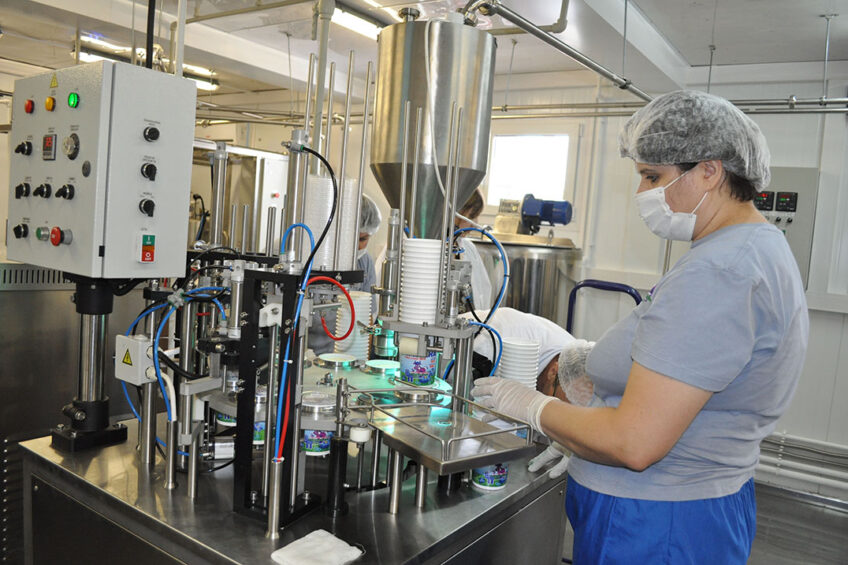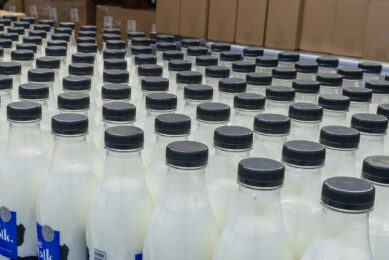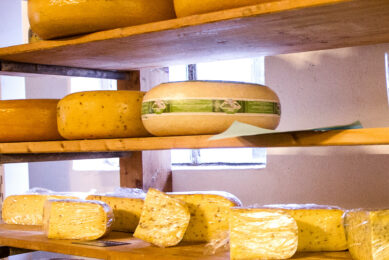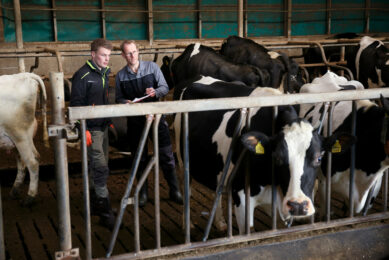Russian dairy farmers eye high-level processing segment

In cooperation with the Russian Academy of Science, Russian dairy farmers are heavily investing in high-level processing in a bid to secure new room for growth.
In July, the Russian government authorised scientists to design technology for the production of protein components for powdered milk to solve the problem of import dependence in the baby food segment, said Irina Donnik, VP of the Russian Academy of Sciences.
By 2024, the scientists will develop technology and launch a pilot production, Alexey Mishustin, Russian prime minister, outlined, speaking during a government meeting. The project’s investment cost stands at 1.5 billion rubles (US$ 20 million).
“Milk deep processing technologies, which are expected to be developed under the project, would help in overcoming dependence in the segment of food for children under 6 months,” Donnik said.

Self-sufficiency in milk and dairy
This is believed to be the first shot in the battle for the dairy industry’s high-level processing segment, commonly known as deep processing in Russia. In 2020, the country produced 32.2 million tonnes of milk, 2.7% up compared to the same period of the previous year. Russia is close to self-sufficiency in milk and dairy products, which is an essential part of its food security.
Genetically modified cows transforming the Russian sector
The Russian Academy of Sciences uses CRISPR/Cas9 to create a new breed of milk cows with better productivity and anti-leucosis protection. Read more…
However, when it comes to products with a high grade of processing, things are different. The Russian Healthcare Ministry estimated that 800,000 babies require infant formulas, and as of today, most of them are imported, primarily from the European Union and the US. The prospects of the deep processing segment are also not limited to baby food.
“Milk deep processing and fractioning help to isolate, among other things, milk sugar, or lactose, which is used in the pharmaceutical industry as a filler for dosage forms, as well as in the production of baby food,” said Elena Melnikova, professor of the Voronezh State Institute of Engineering Technologies.
“This technology during the processing of cheese whey lets you save valuable raw materials and apply them in a new production cycle,” she said, adding that the scientists had already helped Russian dairy company, Molvest, launch a deep processing unit.
Deep processing
Under the developed technology, milk whey passes through fractionating, after which, using ultrafiltration, Molvest obtains whey protein concentrate. This stage is followed by drying, resulting in the production of whey permeate containing up to 90% lactose. As explained by Melnikova, this product is in high demand in the feed, confectionery, and bakery industries.
Deep processing is likely to become the future of the Russian dairy industry, and market participants are confident.

“This [deep processing] increases the points of interaction and cooperation between dairy processors and related industries, the possibility of developing export for a single enterprise and the industry as a whole,” said Sergey Baranov, general director of Kizelmann Rus, adding, “deep processing of milk is a logical step in the further development of the Russian dairy industry and a way for companies to improve business.”
A project of launching one of the first deep processing dairy plants has recently been rolled out by the Russian company RM-Agro. As explained by Igor Baringolts, the company aims to process 2,000 tonnes of milk to obtain micellar casein, whey proteins, isotonic concentrates, lactose, and dry cream.
Cows on pasture threatened in Russia
In some pastures in parts of Russia there may be deadly viruses that have been buried for decades, if not centuries, under the permafrost; these viruses could be released because of global warming. Read more…
“After conducting market research, we discovered that there is a significant surplus of milk on the market,” Baringolts said, explaining that in this context, farmers are usually pushed to sell milk at relatively low prices.
By supplying raw materials to relevant industries, like confectionery, pharmaceutical, dietary supplements production, and so on, RM-Agro could afford to pay more money to dairy farmers and help them maintain business profitability, according to Baringolts.
The investment cost of the plant is estimated at 16.9 billion (US$ 220 million), Baringolts estimated. This is one of the largest projects in the Russian dairy industry launched in the past few years.
“A similar plant already exists in Europe – [like ours] it was also developed with the participation of Kieselmann, processing 8,000 tonnes of milk per day in Germany. There is no [large-scale] deep milk processing plant in Russia today,” Baringolts said.
Deep processing is underinvested
In recent years, dairy processing has come out on top in terms of investment among other subsectors of the food processing industry, and yet deep processing lacks new projects, according to Artem Belov, general director of the Russian Union of dairy producers Soyuzmoloko.
“The Russian dairy industry attracts investments of 55 billion rubles ($ 800 million) per year. Moreover, 10 years ago, the dairy industry was significantly inferior in terms of investments to several other industries, such as beverages and meat, but over the past 2-3 years, things have changed dramatically,” Belov said, adding that 80% of investments are still flowing towards the whole milk products segments, and cheese production.
“Of the 300 billion (US$ 4 billion) rubles that have been pumped in the dairy industry over the past decade, more than 250 billion (US$ 3.3 billion) has been invested in these 2 sectors,” he said.
Belov claimed that the milk processing segment, with the production of such products as dry whole milk, skimmed milk powder, and whey, remained significantly underinvested.
Russia’s strategy to tackle mastitis and antibiotics
Russia is looking for new ways to deal with mastitis as the country is increasingly looking to curb veterinarians’ use of antibiotics. It is also looking into designing novel types of bacteriophages. Read more…
“When we talk about exports, 80% of the world trade in dairy products accounts for dry dairy products. Therefore, it is crucial to stimulate the development of the production of dry milk products,” Belov said.

There are a number of companies in Russia willing to invest in advanced milk processing where state aid is allocated, including in the form of concessional investment loans. Belov explained that these market players see good potential in this segment in terms of project payback and entering new markets.
The state aid, if approved, will have an impact not only on the development of dry milk products but also on the development of the dairy market as a whole. In many ways, it can become a driver for the development of not only processing but also the entire raw materials sector, Belov said.
“According to our estimates, the presence of preferential investment loans and preferential Capex will allow attracting more than 50 billion rubles (US$ 800 million) to the industry over the next 7-9 years, implement about 10-15 projects, and significantly increase domestic production,” Belov said, adding that, among other things, milk powder production could grow by 100,000 tonnes per year and milk whey production by 60,000 tonnes per year.
Join 13,000+ subscribers
Subscribe to our newsletter to stay updated about all the need-to-know content in the dairy sector, two times a week.










